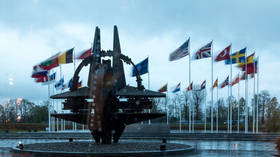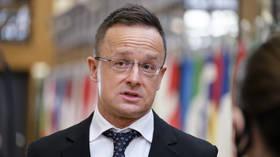Tsar Bomba: Replica of world’s most powerful nuke ever detonated to be displayed in Moscow

People in Moscow will have the opportunity to view a life-size replica of the biggest detonated nuclear bomb in history. A copy of the Tsar Bomba will be displayed at a historical exhibition in the heart of the Russian capital.
The exhibition is taking place to celebrate the 70th anniversary of Russian atomic development and will take place from September 1-29 at the Manege Exhibition Hall, just a stone’s throw away from the Kremlin and Red Square.
“The main highlight of the exhibition will be legendry thermonuclear bomb AN602, or Kuzkina Mat’, which is of course Tsar Bomba,” reads a statement from the state nuclear corporation Rosatom, which is organizing the event.
READ MORE: 50th anniversary of Tsar bomb (VIDEO)
The replica will be delivered to the Russian capital from the city of Sarov, which is around 400km east of Moscow. Sarov is home to the Russian Federal Nuclear Center.
Visitors will also have the chance to see unique documents and items showing the development of nuclear weapons, many of which will be on display to the public for the first time.
3,800 times more powerful than Hiroshima
The Tsar Bomba hydrogen bomb is the largest-ever nuclear device to have been detonated.
The power of the explosion exceeded the combined power of all explosives used by all countries during WWII. The explosive energy released exceeded 3,800 times the Fat Man bomb dropped on Nagasaki.
On October 30, 1961, a specially modified Tu-95 strategic bomber enveloped in a protective white coating, dropped the massive bomb at a testing range on the Novaya Zemlya Archipelago in the Arctic Ocean. The explosive device was parachuted from 10,500 meters so that the bomber and a flying laboratory that was collecting data had time – 188 seconds – to leave the area.
The bomb detonated at an altitude of 4,200 meters. The unprecedented explosion was expected to measure 51.5 megatons. In reality, its power was estimated at between 57 and 58.6 megatons.
One of the groups participating in the experiment, almost 200 miles (320km) away from the epicenter, saw a bright flash even with dark glasses on. The filming crew on board the carrier plane, in charge of making a documentary, recalled, “Outside, there was a sea of light, an ocean of light suddenly bursting out… Once our plane came out of the clouds, in between them, a huge balloon of bright orange color appeared! It was like Jupiter – powerful, and conceited, and confident, slowly and silently crawling up…”
The ball of fire had a radius of 4.6km and was visible from a distance of 1,000km, despite dense clouds. The mushroom cloud from the explosion rose up to 67km and had a diameter of 95km.
For about 40 minutes after the explosion, radio signal distortions were observed hundreds of kilometers from the epicenter due to ionization of the atmosphere.
The blast wave circled the planet three times. On Dikson Island, some 800km from the range, the wave blasted out windows, bringing the sound of cannonade with it.












